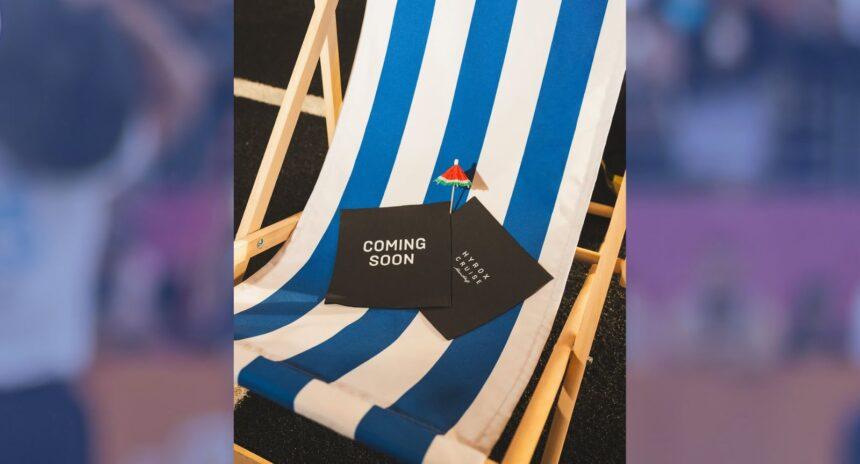RPM Training Co. Launches Redesigned, State-of-the-Art Equipment, Home Gym Kits
“Ever smoke your shin doing a box jump?”
CrossFit athlete’s reply: “Do bears shit in the woods?”
Oh, the notorious, painful box jump shin bruise. While a badge of honor the first time, multiple offenses can be embarrassing, and not something we want to become our go to move.
Finding a solution to the CrossFit athlete’s box bruise experience was one of the problems RPM Training Co. sought to solve with their line of redesigned fitness equipment and customizable home gym kits, all of which were released last month and are available now.
Another was to create a more cohesive, attractive, well-designed home gym, explained RPM Training Co.’s co-founder and CEO Shane Rogers.
“If you go into anybody’s home gyms, there’s no cohesiveness across the individual pieces of equipment…there (is) no oversight from a design perspective,” he explained.
In light of this, from their patented plyometric box—the ExoBox—to their kettlebells and dumbbells, pull-up bar, gymnastics rings, barbells and bumper plates, RPM’s equipment went through a full redesign process in recent months, the ultimate goal being to create a well-designed, fully loaded, attractive, cohesive, space-effective home gym for the functional fitness athlete.
Four Notable Redesigns
ExoBox: To solve the box jump shinner problem, RPM’s ExoBox now features rounded-off corners, making a shin to the box a much less aggressive blow.
“If you have ever caught your shin on the corner of a box, you realize the importance of this rounded corner…if your shin does smack it, it’s not going to be the same kind of trauma you would experience from a traditional box,” Rogers said. “Also, when you rotate your box, or roll your box, in the gym, the sharp corners often splinter…so having this really durable Exoskeleton to protect the edges not only protects the box, but also gives you a nice transition around that corner.”
“This is something we worked on for years,” he added, and are finally launching it in conjunction with their new training platform Atom, which seeks to provide a full at-home training experience.
A final unique feature of the box is the addition of a hatch panel on the front, which can be removed, making it a perfect storage vessel for various accessories—from resistance bands, to a skipping rope to shoes—that you don’t necessarily want laying around your home gym, Rogers explained.
Dumbbells: Traditionally, dumbbells are either rounded or a hex-type of shape, neither of which is ideal, explained Rogers, as rounded dumbbells are notorious for rolling away, while it can be painful to catch your forearm or thigh on the sharp hexagon corner. RPM’s solution was to round the corners on the hex shape, similar to what they did with their ExoBox.
Secondly, the diameter of a traditional dumbbell’s handle changes as the weights get heavier, so RPM standardized the diameter on all of their dumbbells to 28.5 mm, the standard diameter of a 20 kg barbell.
Kettlebells: Similar to their dumbbells, and unlike other kettlebell brands, RPM’s new kettlebells also have a standardized handle diameter and shape, and then “the body just grows and shrinks,” Rogers said.
Second, the flat face of the RPM bells means they sit more comfortably against the forearm than many other kettlebells on the market, Rogers explained.
“It more closely resembles a competition bell,” he added.
Pull-up bar: “If you think about (a pull-up bar) in your home, when you want to use your pull-up bar you want it out, but when you don’t want to use your pull-up bar, ideally it would kind of disappear,” Rogers explained.
To achieve this, RPM’s new pull-up bar folds up against the wall so that it’s completely out of the way when you’re not using it.

RPM’s Home Gym Kits
While you can purchase RPM’s equipment individually, you can also purchase three different home gym kits—the Axis, Fly or Power kits—all of which include different equipment customized according to an athlete’s current fitness level and skill set.
The Axis kit, for example, includes an Exobox, dumbbells, a sandbag, kettlebell, and jump rope, and accessory pieces, including a training mat, a core mat, a foam roller, a myoball, a resistance band and a PVC.
Meanwhile, the Fly kit includes all of the above, plus a pull-up bar and gymnastics rings. And the Power kit—the most advanced kit—features all of the components from the Fly kit, and also includes a barbell and collars and a bumper plate package.
One of the things that sets their new equipment kits apart, Rogers explained, is their cohesiveness.
“With the Atom equipment kits, we intentionally brought consistency to a family of products that are not generally designed as a family. As with everything we do at RPM, we worked through a very considered design process. We improved where we felt we could bring real innovation and refinement, while not disrupting the classic elements of these pieces,” he said.
But the ultimate goal is always to offer each athlete exactly what they need to train comfortably from home, either on their own, or by becoming part of RPM Training’s worldwide community, Atom, he explained.
Rogers added: “The beauty of owning our own designs and processes is that we’re positioned to adjust to consumer feedback, as we stay committed to making the best equipment on the market. So far, we’ve had great feedback indicating that our improvements have been recognized and appreciated.”


